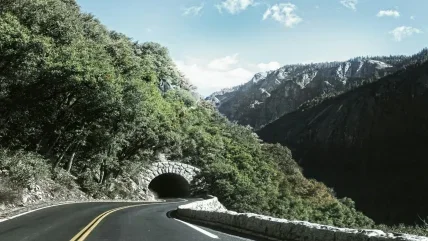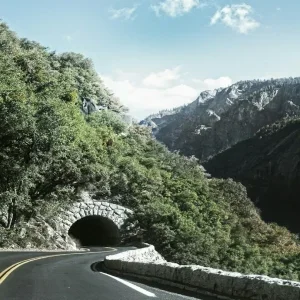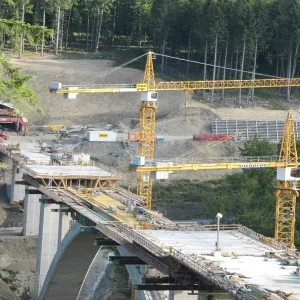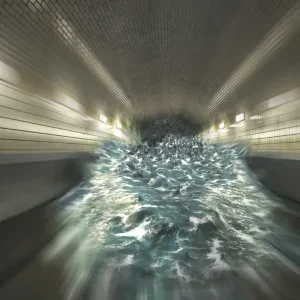
The tunnelling industry plays a vital role in infrastructure development, providing essential transportation, water supply, and utility networks. However, tunnelling projects can have significant impacts on the surrounding natural environment, including disruption of ecosystems, habitat fragmentation, and alteration of hydrological systems. Ecosystem collapse, characterised by the loss of biodiversity, degradation of ecosystem services, and decline in ecological resilience, poses serious risks to tunnelling projects and their sustainability. This article examines the risks of ecosystem collapse in the tunnelling industry, explores the underlying causes, and outlines strategies for mitigating these risks.
Understanding Ecosystem Collapse:
Ecosystem collapse refers to the rapid and widespread decline in the health, structure, and functioning of ecosystems, leading to the loss of biodiversity and ecosystem services. This phenomenon can result from various factors, including habitat destruction, pollution, invasive species, climate change, and unsustainable resource extraction. Ecosystem collapse can have far-reaching consequences for human societies, including food insecurity, water scarcity, increased vulnerability to natural disasters, and loss of cultural heritage.
Risks of Ecosystem Collapse in the Tunnelling Industry:
Tunnelling projects can contribute to ecosystem collapse through direct and indirect impacts on the natural environment:
- Habitat Destruction: Excavation and construction activities associated with tunnelling projects can lead to the destruction of natural habitats, including forests, wetlands, and riparian zones. Habitat loss and fragmentation disrupt ecological processes, decrease species diversity, and reduce the availability of food and shelter for wildlife.
- Soil Erosion and Sedimentation: Tunnelling projects can disturb soil and vegetation, leading to increased soil erosion and sedimentation in nearby water bodies. Sediment runoff can degrade water quality, smother aquatic habitats, and impair the health of aquatic ecosystems, affecting fish populations and other aquatic organisms.
- Alteration of Hydrological Systems: Tunnelling projects may alter natural hydrological systems, including groundwater flow, surface water runoff, and watershed dynamics. Changes in hydrology can lead to the loss of wetlands, stream channelisation, and alteration of floodplain habitats, disrupting the balance of ecosystems and exacerbating flood risks downstream.
- Pollution and Contamination: Construction activities, such as excavation, blasting, and vehicle traffic, can generate pollutants, including sediment, chemicals, and noise, which can degrade air, soil, and water quality. Pollution and contamination can harm wildlife, aquatic organisms, and human communities dependent on ecosystem services for drinking water, agriculture, and recreation.
- Invasive Species Introduction: Tunnelling projects can inadvertently introduce invasive species into ecosystems through transportation of materials, equipment, and vehicles. Invasive species outcompete native flora and fauna, disrupt ecological relationships, and alter ecosystem structure and function, leading to biodiversity loss and ecological imbalance.
Mitigation Strategies:
To mitigate the risks of ecosystem collapse in the tunnelling industry, stakeholders can implement various strategies and measures:
- Environmental Impact Assessment (EIA): Conduct comprehensive environmental impact assessments to identify potential impacts of tunnelling projects on ecosystems, biodiversity, and ecosystem services. Assess the significance of impacts, identify sensitive habitats and species, and develop mitigation measures to minimise adverse effects.
- Habitat Restoration and Conservation: Implement habitat restoration and conservation initiatives to offset the loss of natural habitats and enhance ecological resilience. Restore degraded ecosystems, establish wildlife corridors, and protect critical habitats to support biodiversity conservation and ecosystem recovery.
- Green Infrastructure and Sustainable Design: Incorporate green infrastructure and sustainable design principles into tunnelling projects to minimise environmental impacts and enhance ecosystem services. Design tunnels to minimise surface disturbance, integrate vegetated roofs and walls, and implement stormwater management systems to reduce runoff and pollution.
- Biodiversity Offsetting and Compensation: Implement biodiversity offsetting and compensation measures to mitigate residual impacts of tunnelling projects on ecosystems and biodiversity. Invest in habitat restoration, conservation easements, and land acquisition to compensate for habitat loss and fragmentation and enhance overall ecological value.
- Stakeholder Engagement and Community Participation: Engage with local communities, indigenous peoples, and other stakeholders to identify concerns, incorporate local knowledge, and foster collaboration in ecosystem management and conservation. Empower communities to participate in decision-making processes, monitor environmental impacts, and contribute to ecosystem stewardship.
- Adaptive Management and Monitoring: Implement adaptive management and monitoring programmes to track the effectiveness of mitigation measures, assess ecosystem health, and respond to changing environmental conditions. Collect baseline data, establish monitoring protocols, and incorporate feedback mechanisms to improve environmental performance and reduce risks of ecosystem collapse.
Case Studies and Best Practices:
To illustrate the effectiveness of these mitigation strategies, consider the following case studies and best practices from tunnelling projects around the world:
- Gotthard Base Tunnel, Switzerland: The Gotthard Base Tunnel project incorporated extensive environmental planning and mitigation measures to minimise impacts on sensitive alpine ecosystems. Habitat restoration, wildlife crossings, and ecological monitoring programmes were implemented to enhance biodiversity conservation and ecosystem resilience.
- Channel Tunnel, UK-France: The Channel Tunnel project implemented innovative design and construction techniques to minimise environmental impacts on coastal ecosystems and marine biodiversity. Pre-construction surveys, habitat relocation, and marine monitoring programmes were used to mitigate disturbance to marine habitats and species.
- Crossrail Project, London, UK: The Crossrail project integrated green infrastructure and sustainable design features into tunnel construction to enhance urban biodiversity and ecosystem services. Green roofs, rain gardens, and wildlife habitats were incorporated into station designs to create green corridors and enhance urban biodiversity.
Conclusion:
Combatting the risks of ecosystem collapse in the tunnelling industry requires a proactive and integrated approach that balances infrastructure development with environmental conservation and sustainability. By implementing environmental impact assessments, habitat restoration initiatives, sustainable design principles, and stakeholder engagement strategies, stakeholders can minimise the adverse impacts of tunnelling projects on ecosystems and biodiversity, enhance ecological resilience, and promote long-term sustainability of infrastructure development.







